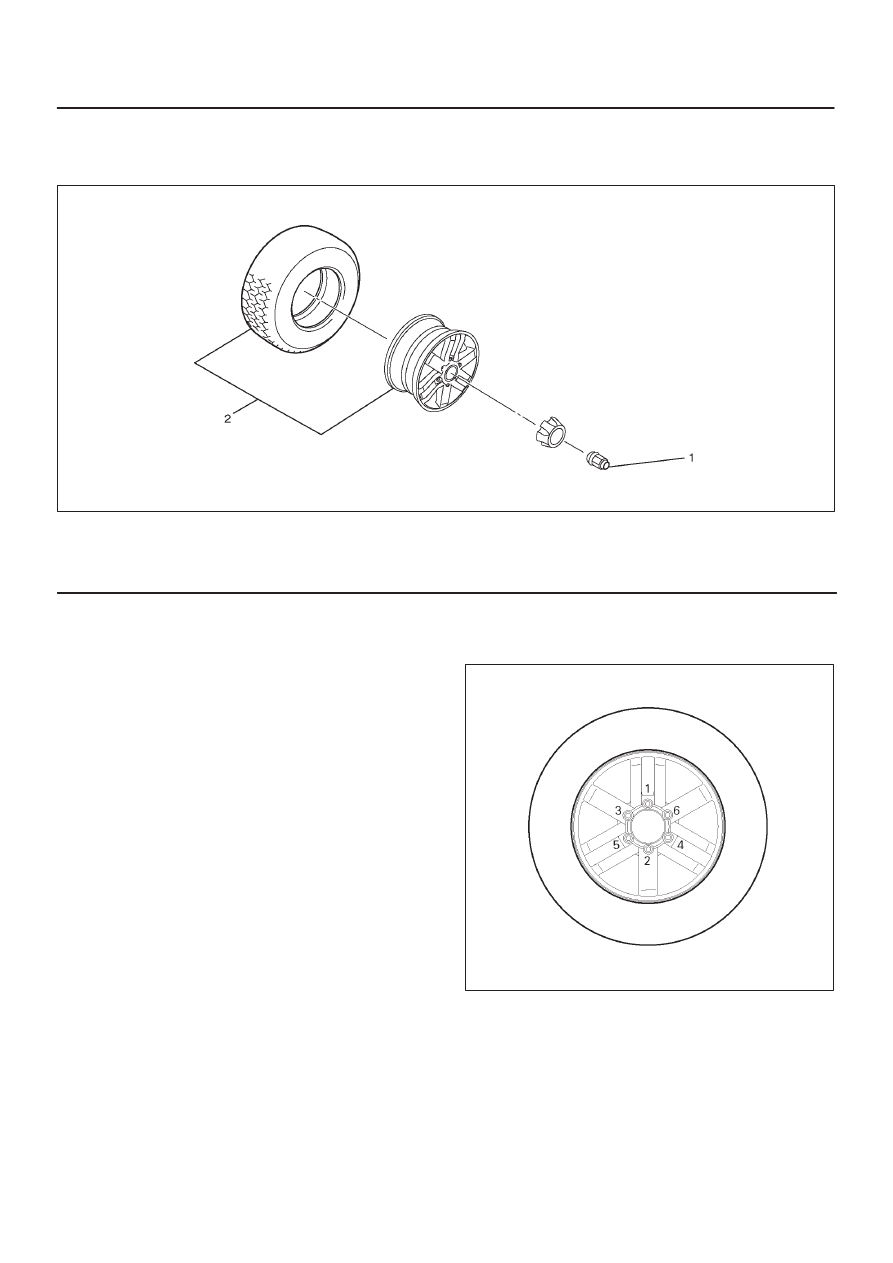Isuzu Amigo / Axiom / Trooper / Rodeo / VehiCross. Manual - part 69

WHEEL AND TIRE SYSTEM
3E–11
Wheel
Wheel and Associated Parts
480R200004
Legend
(1) Wheel Lug Nut
(2) Alumi Wheel and Tire
Removal
1. Loosen wheel lug nut by approximately 180
°
(half a
rotation), then raise the vehicle and remove the nuts.
2. Remove wheel and tire.
NOTE: Never use heat to loosen a tight wheel lug nut.
The application of heat to the hub can shorten the life of
the wheel and may cause damage to wheel bearings.
Installation
1. Install wheel and tire.
2. Install wheel lug nut, and lower the vehicle. Tighten
the wheel lug nuts to the specified torque in numerical
order.
Torque: 118 N·m (87 lb ft)
CAUTION: Before installing wheels, remove any
build-up of corrosion on the wheel mounting surface
and brake disc mounting surface by scraping and
wire brushing. Installing wheels without good
metal-to-metal contact at mounting surfaces can
cause wheel nuts to loosen, which can later allow a
wheel to come off while the vehicle is moving.
NOTE: Valve caps should be on the valve stems to keep
dust and water out.
480R200003